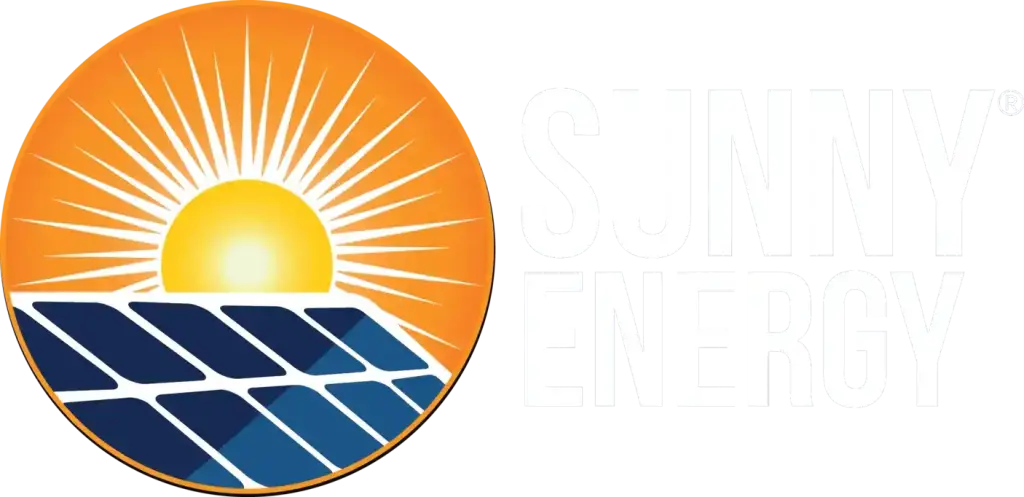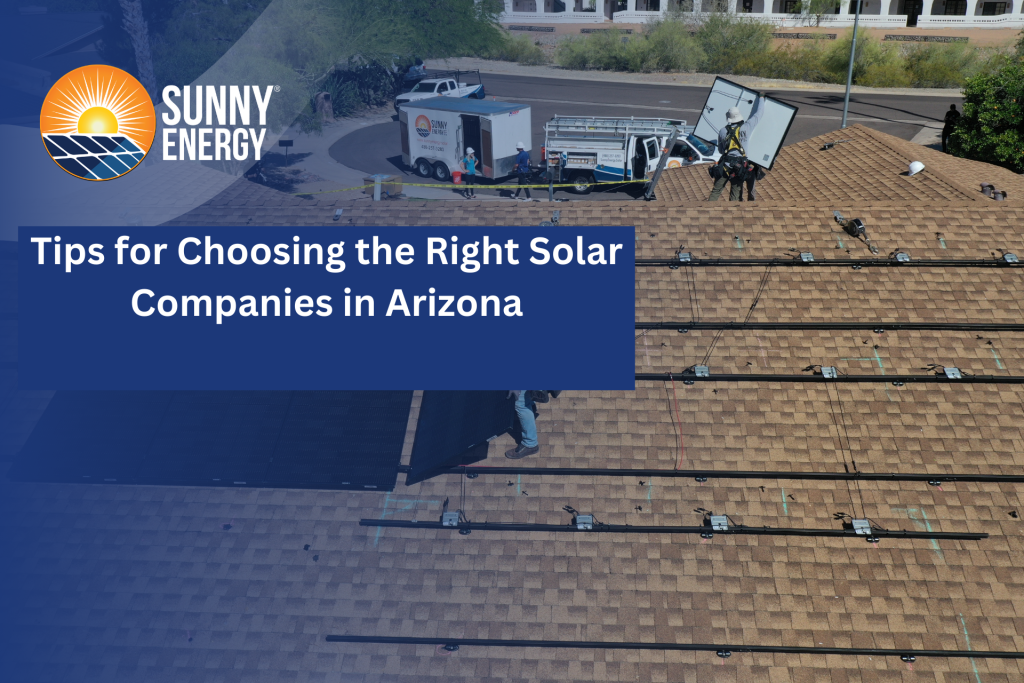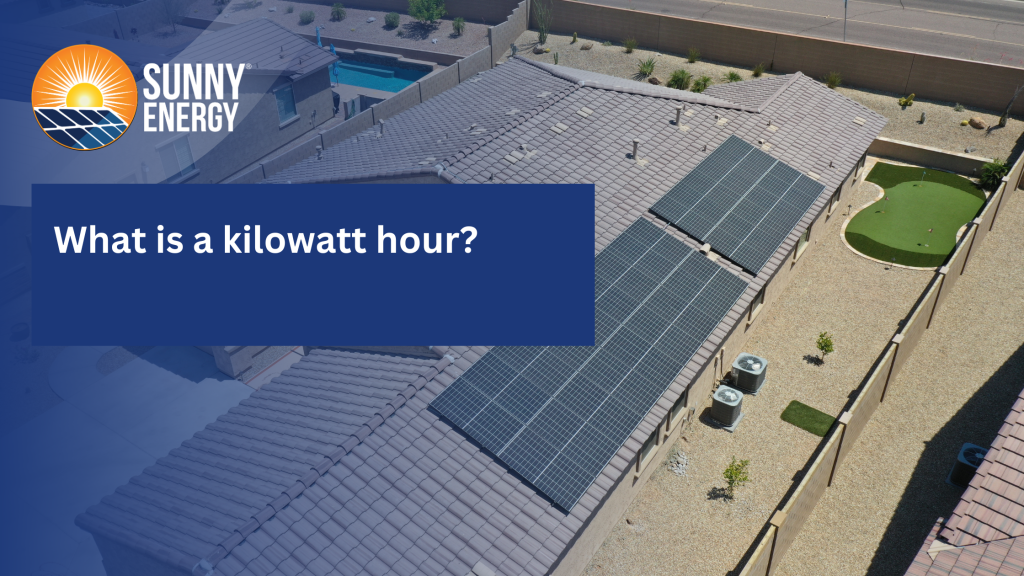The Earth’s axis is tilted, causing variations in the sun’s path across the sky throughout the year. Installing solar panels is an important investment, and a common question arises: How does this natural tilt affect the efficiency of solar panels, and how can you optimize their performance to ensure a reliable and consistent energy output? To answer it all, our experts have curated this blog to talk about the terms solar panel orientation and angle, factors affecting the optimum angle for solar panel and what is more important. In the end of this blog, we will also see how a trusted solar installer and a top rated solar companies in Arizona like Sunny Energy can help you.
Ready to geek out with us about solar? Let’s go!
Solar panel orientation
Solar panel orientation refers to the direction panels face for optimal sunlight exposure. In Arizona, where sunlight is abundant, the preferred orientation is south-facing. This maximizes sunlight capture throughout the day, optimizing energy production. However, east or west-facing installations can be effective under space constraints or specific energy goals. East-facing panels capture morning sunlight, beneficial for early energy production, while west-facing installations capture afternoon sunlight, useful for higher energy consumption in the late afternoon or evening. The choice depends on factors like space availability, energy consumption patterns, and project requirements, providing tailored solutions beyond the standard south-facing orientation.
Solar panel angle
The solar panel angle, or tilt, is crucial for performance. It determines how directly panels receive sunlight, especially with changing sun positions in different seasons. In Arizona’s variable climate, finding the right tilt is key for efficient energy production. Fixed angles may work in stable climates, but in Arizona, where the sun’s angle varies, adjustable mounting systems are valuable. They allow panels to adapt to changing sun positions, maintaining an optimum angle for solar panel efficient energy capture throughout the year. This adaptability ensures consistent and efficient energy output, maximizing the return on your solar energy investment.
Factors affecting the optimum angle for solar panel
The optimum angle for solar panel is influenced by various factors, each contributing to the overall efficiency of the solar energy system. Let’s delve into each of them:
1. Latitude:
Latitude is a key determinant of the optimal tilt for solar panels. The Earth’s curvature causes sunlight to strike the surface at varying angles, and the latitude of a location affects the optimum angle for solar panel at which sunlight reaches the panels. In the case of Arizona, which is situated at a relatively low latitude, a moderately tilted solar panel setup is generally well-suited for efficient energy capture.
2. Climate:
The climate of a region impacts the amount and intensity of sunlight it receives. Arizona, known for its sunny climate, benefits from a high number of sunlight hours. This abundance of sunlight contributes to the overall effectiveness of solar panels, allowing for a strategic tilt angle that maximizes energy production.
3. Solar tracking technology:
The specific solar tracking technology in use also plays a significant role in determining the optimum angle for solar panel. Solar tracking systems are designed to follow the sun’s path across the sky throughout the day. These advanced systems can dynamically adjust the tilt of the solar panels, ensuring they are constantly aligned for maximum sunlight exposure. In Arizona, where the intensity and optimum angle for solar panel of sunlight change throughout the day and across seasons, solar tracking technology becomes particularly valuable for enhancing energy production.
Which is more important: Angle or Orientation?
The debate over whether solar panel orientation or angle is more critical underscores the importance of finding a balanced approach to maximize energy production in a solar power system.
Striking the right balance:
The effectiveness of a solar power system lies in finding the right balance between orientation and angle. While a south-facing orientation is generally recommended in Arizona to maximize daily sunlight exposure, the angle at which panels are tilted plays a complementary role. An optimal tilt ensures that the panels are at the optimum angle for solar panel to capture sunlight effectively, considering the changing position of the sun throughout the day and across seasons.
Importance of balance:
If the orientation is correct but the angle is off, the panels may not capture sunlight as efficiently as possible. Conversely, even with the optimum angle for solar panel, if the panels face the wrong direction, their overall efficiency may be compromised. Therefore, both factors are integral, and their synergy is crucial for achieving the highest energy production efficiency.
How does Sunny Energy assist in maximizing solar energy production through perfect panel orientation?
Sunny Energy, your trusted solar panel installer services in Arizona, understands the importance of precise panel orientation and optimum angle for solar panel. Sunny Energy a leading Arizona solar company team of experts conducts thorough site assessments to determine the optimal orientation and optimum angle for solar panel based on your location and energy needs. Sunny Energy is a trusted solar company in Phoenix who leverage advanced technologies and customizable mounting solutions to ensure your solar panels capture the maximum sunlight, translating into higher energy yields for your system.
Don’t trust just anyway for your solar system installation. Let the best solar company in Arizona i.e. Sunny Energy give you a quote and design that meets your needs and maximizes your savings.




